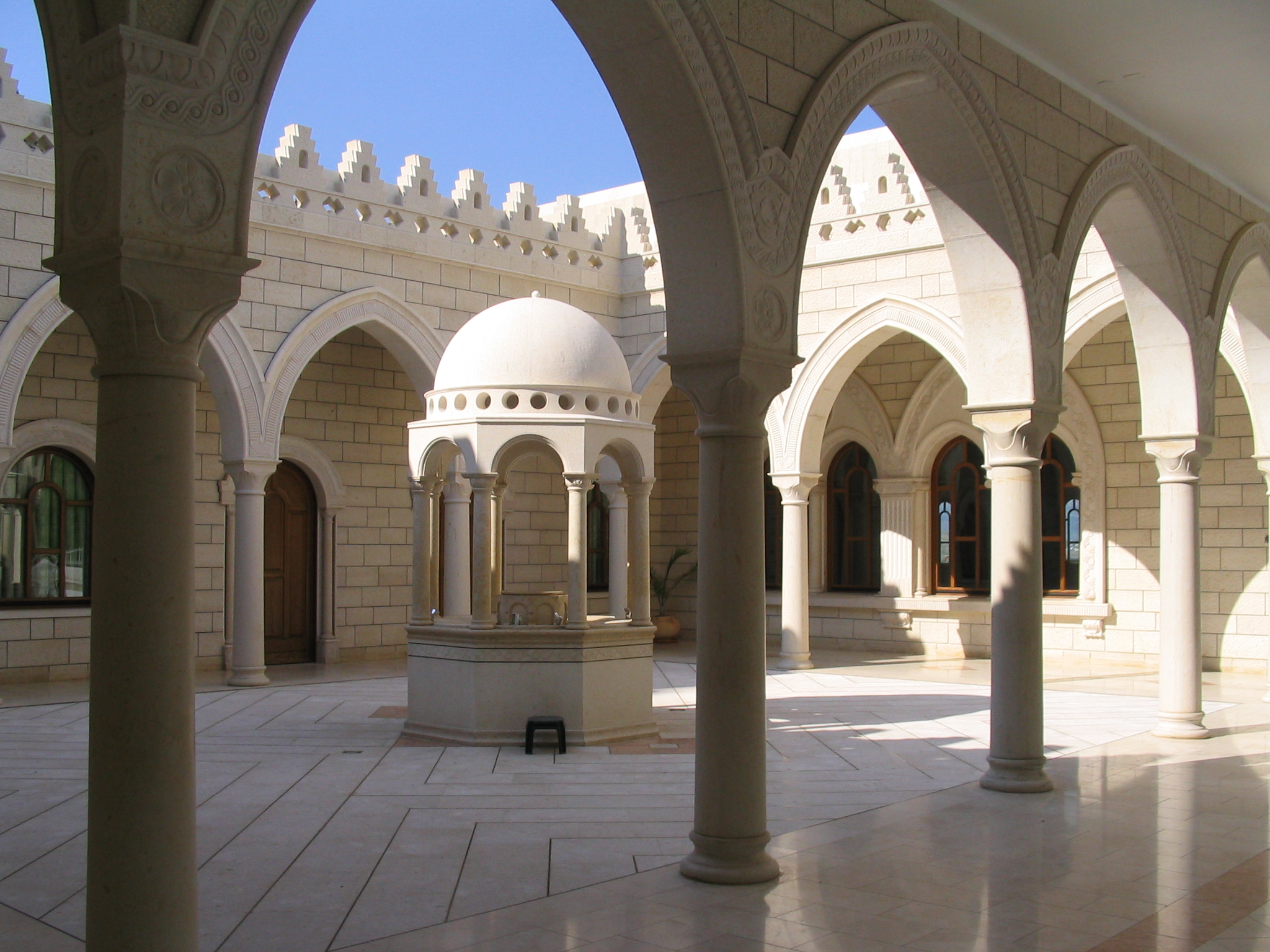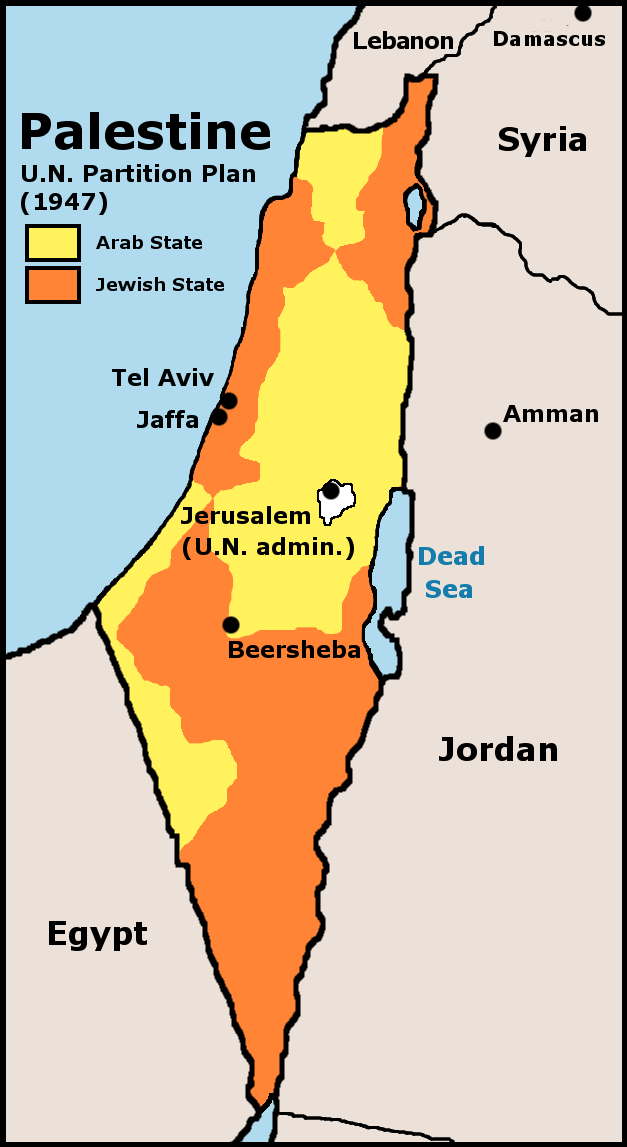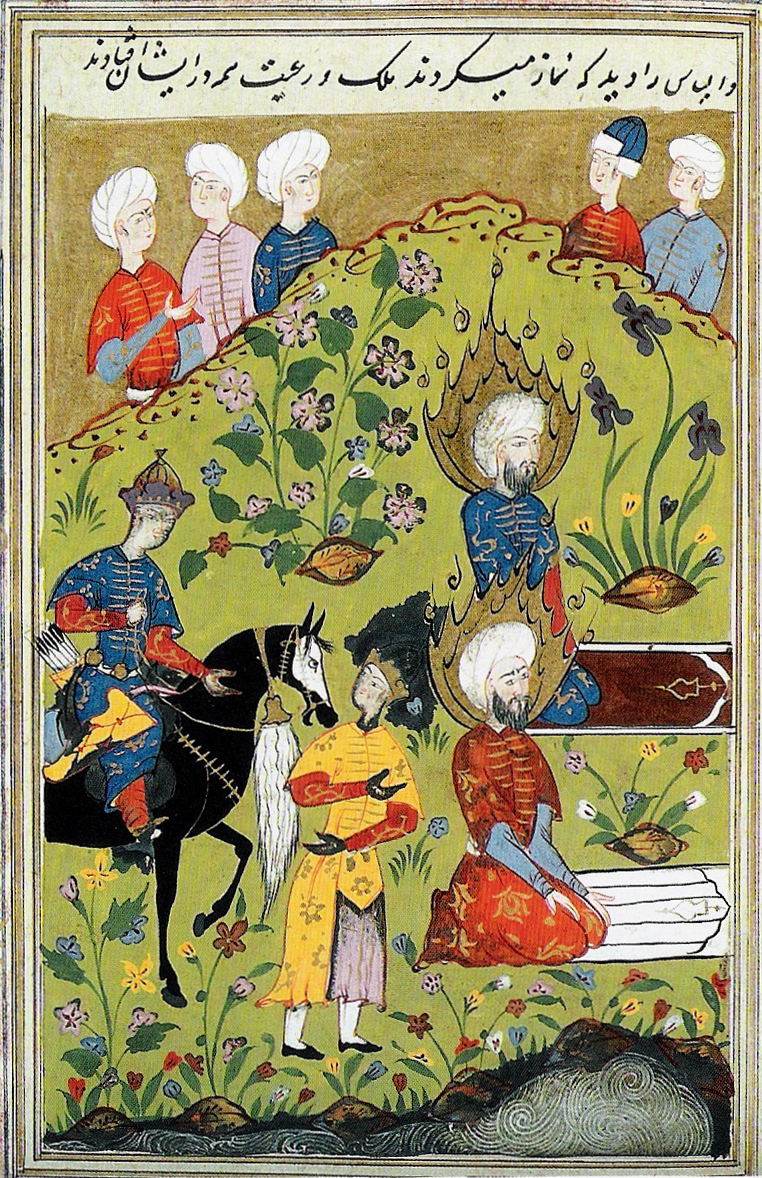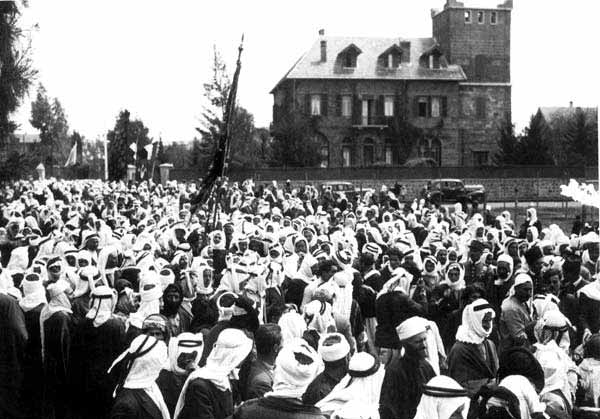|
Druze In Israel
Israeli Druze or Druze Israelis ( ar, الدروز الإسرائيليون; he, דְּרוּזִים יִשְׂרְאֵלִים) are an ethnoreligious minority among the Arab citizens of Israel. In 2019, there were 143,000 Druze, Druze people living within Israel and the Golan Heights, Israeli-occupied Golan Heights, comprising 1.6% of the total population of Israel. Although Druzism, their ethnic religion, originally developed out of Isma'ilism, Ismaʿilism (a branch of Shia Islam), the Druze do not consider themselves Muslims. In 1957, the Israeli government designated Druze Israelis as a distinct ethnic community at the request of Druze communal leaders. Alongside the Israeli Jews, Jewish majority and the Circassians in Israel, Circassian minority, the Druze minority is required by law to serve in the Israel Defense Forces, and members of the community have also attained top positions in Israeli politics and public service. As is the case for the Circassian community, onl ... [...More Info...] [...Related Items...] OR: [Wikipedia] [Google] [Baidu] |
Tiberias
Tiberias ( ; he, טְבֶרְיָה, ; ar, طبريا, Ṭabariyyā) is an Israeli city on the western shore of the Sea of Galilee. A major Jewish center during Late Antiquity, it has been considered since the 16th century one of Judaism's Four Holy Cities, along with Jerusalem, Hebron, and Safed. In , it had a population of . Tiberias was founded circa 20 CE by Herod Antipas and was named after Roman emperor Tiberius. It became a major political and religious hub of the Jews in the Land of Israel after the destruction of Jerusalem and the desolation of Judea during the Jewish–Roman wars. From the time of the second through the tenth centuries CE, Tiberias was the largest Jewish city in the Galilee, and much of the Mishna and the Jerusalem Talmud were compiled there. Tiberias flourished during the early Islamic period, when it served as the capital of Jund al-Urdunn and became a multi-cultural trading center.Hirschfeld, Y. (2007). Post-Roman Tiberias: between East and We ... [...More Info...] [...Related Items...] OR: [Wikipedia] [Google] [Baidu] |
Israeli Declaration Of Independence
The Israeli Declaration of Independence, formally the Declaration of the Establishment of the State of Israel ( he, הכרזה על הקמת מדינת ישראל), was proclaimed on 14 May 1948 ( 5 Iyar 5708) by David Ben-Gurion, the Executive Head of the World Zionist Organization, Chairman of the Jewish Agency for Palestine, and soon to be first Prime Minister of Israel. It declared the establishment of a Jewish state in Eretz-Israel, to be known as the State of Israel, which would come into effect on termination of the British Mandate at midnight that day. The event is celebrated annually in Israel with a national holiday Independence Day on 5 Iyar of every year according to the Hebrew calendar. Background The possibility of a Jewish homeland in Palestine had been a goal of Zionist organizations since the late 19th century. In 1917 British Foreign Secretary Arthur Balfour stated in a letter to British Jewish community leader Walter, Lord Rothschild that: His Majesty's ... [...More Info...] [...Related Items...] OR: [Wikipedia] [Google] [Baidu] |
Epistles Of Wisdom
The Epistles of Wisdom or ''Rasa'il al-Hikmah'' ( ar, رَسَائِل ٱلْحِكْمَة) is a corpus of sacred texts and pastoral letters by teachers of the Druze faith native to the Levant, which has currently close to a million practitioners. The Druze canon The full Druze canon or Druze scripture includes the Old Testament, the New Testament, the Quran and philosophical works by Plato and those influenced by Socrates among works from other religions and philosophers. The Druze claim that an understanding of these is necessary, but that their ''al-ʻUqqāl'' (), ("the Knowledgeable Initiates") have access to writings of their own that supersede these. The Epistles of Wisdom are also referred to as the Kitab al-Hikma (Book of Wisdom) and al-Hikma al-Sharifa. Other ancient Druze writings include the ''Rasa'il al-Hind (Epistles of India)'' and the previously lost (or hidden) manuscripts such as ''al-Munfarid bi-Dhatihi'' and ''al-Sharia al-Ruhaniyya'' as well as others inclu ... [...More Info...] [...Related Items...] OR: [Wikipedia] [Google] [Baidu] |
Jethro (Bible)
In the Hebrew Bible, Jethro (; , lit. "His Excellence/Posterity"; ar, يثرون, Yathʿron) was Moses' father-in-law, a Kenite shepherd and priest of Midian, Harris, Stephen L., Understanding the Bible. Palo Alto: Mayfield. 1985. sometimes named as Reuel (or Raguel). In Exodus, Moses' father-in-law is initially referred to as "Reuel" (Exodus 2:18) but afterwards as "Jethro" (Exodus 3:1). He was also identified as Hobab in the Book of Numbers 10:29. Some Muslim scholars and the Druze identify Jethro with the prophet Shuayb, also said to come from Midian. For the Druze, Shuayb is considered the most important prophet, and the ancestor of all Druze. In Exodus Jethro is called a priest of Midian and became father-in-law of Moses after he gave his daughter, Zipporah, in marriage to Moses. He is introduced in . Jethro is recorded as living in Midian, a territory stretching along the eastern edge of the Gulf of Aqaba, northwestern Arabia. Some believe Midian is within the Sina ... [...More Info...] [...Related Items...] OR: [Wikipedia] [Google] [Baidu] |
Khidr
Al-Khidr () ( ar, ٱلْخَضِر, al-Khaḍir), also transcribed as al-Khadir, Khader, Khidr, Khizr, Khazer, Khadr, Khedher, Khizir, Khizar, is a figure described but not mentioned by name in the Quran as a righteous servant of God possessing great wisdom or mystic knowledge. In various Islamic and non-Islamic traditions, Khidr is described as a messenger, prophet or wali, who guards the sea, teaches secret knowledge and aids those in distress. He prominently figures as patron of the Islamic saint ibn Arabi. The figure of al-Khidr has been syncretized over time with various other figures including Dūraoša and Sorūsh in Iran, Sargis the General and Saint George in Asia Minor and the Levant, Samael (the divine prosecutor) in Judaism, Elijah among the Druze, John the Baptist in Armenia, and Jhulelal in Sindh and Punjab in South Asia. Though not mentioned by name in the Quran, he is named by Islamic scholars as the figure described in as a servant of God who has been given ... [...More Info...] [...Related Items...] OR: [Wikipedia] [Google] [Baidu] |
John The Baptist
John the Baptist or , , or , ;Wetterau, Bruce. ''World history''. New York: Henry Holt and Company. 1994. syc, ܝܘܿܚܲܢܵܢ ܡܲܥܡܕ݂ܵܢܵܐ, Yoḥanān Maʿmḏānā; he, יוחנן המטביל, Yohanān HaMatbil; la, Ioannes Baptista; cop, ⲓⲱⲁⲛⲛⲏⲥ ⲡⲓⲡⲣⲟⲇⲣⲟⲙⲟⲥ or ; ar, يوحنا المعمدان; myz, ࡉࡅࡄࡀࡍࡀ ࡌࡀࡑࡁࡀࡍࡀ, Iuhana Maṣbana. The name "John" is the Anglicized form, via French, Latin and then Greek, of the Hebrew, "Yochanan", which means "YHWH is gracious"., group="note" ( – ) was a mission preacher active in the area of Jordan River in the early 1st century AD. He is also known as John the Forerunner in Christianity, John the Immerser in some Baptist Christian traditions, and Prophet Yahya in Islam. He is sometimes alternatively referred to as John the Baptiser. John is mentioned by the Roman Jewish historian Josephus and he is revered as a major religious figure Funk, Robert W. & the Jes ... [...More Info...] [...Related Items...] OR: [Wikipedia] [Google] [Baidu] |
Jesus
Jesus, likely from he, יֵשׁוּעַ, translit=Yēšūaʿ, label=Hebrew/Aramaic ( AD 30 or 33), also referred to as Jesus Christ or Jesus of Nazareth (among other names and titles), was a first-century Jewish preacher and religious leader; he is the central figure of Christianity, the world's largest religion. Most Christians believe he is the incarnation of God the Son and the awaited Messiah (the Christ) prophesied in the Hebrew Bible. Virtually all modern scholars of antiquity agree that Jesus existed historically. Research into the historical Jesus has yielded some uncertainty on the historical reliability of the Gospels and on how closely the Jesus portrayed in the New Testament reflects the historical Jesus, as the only detailed records of Jesus' life are contained in the Gospels. Jesus was a Galilean Jew who was circumcised, was baptized by John the Baptist, began his own ministry and was often referred to as "rabbi". Jesus debated with fellow Jews on ho ... [...More Info...] [...Related Items...] OR: [Wikipedia] [Google] [Baidu] |
Jewish Virtual Library
Jews ( he, יְהוּדִים, , ) or Jewish people are an ethnoreligious group and nation originating from the Israelites Israelite origins and kingdom: "The first act in the long drama of Jewish history is the age of the Israelites""The people of the Kingdom of Israel and the ethnic and religious group known as the Jewish people that descended from them have been subjected to a number of forced migrations in their history" and Hebrews of historical Israel and Judah. Jewish ethnicity, nationhood, and religion are strongly interrelated, "Historically, the religious and ethnic dimensions of Jewish identity have been closely interwoven. In fact, so closely bound are they, that the traditional Jewish lexicon hardly distinguishes between the two concepts. Jewish religious practice, by definition, was observed exclusively by the Jewish people, and notions of Jewish peoplehood, nation, and community were suffused with faith in the Jewish God, the practice of Jewish (religious) l ... [...More Info...] [...Related Items...] OR: [Wikipedia] [Google] [Baidu] |
Northern District (Israel)
The Northern District ( he, מחוז הצפון, ''Mekhoz HaTzafon''; ar, منطقة الشمال, ''Minṭaqat ash-Shamāl'') is one of Israel's six administrative districts. The Northern District has a land area of 4,478 km2, which increases to 4,638 km2 when both land and water are included. The district capital is Nof HaGalil and the largest city is Nazareth. The Golan Heights has been run as a sub-district of the North District of Israel since the 1981 Golan Heights Law was passed, although the claim is only recognized by the United States while United Nations Security Council Resolution 497 condemns the annexation but does not enforce it. The Golan Heights covers a land area of 1,154 km2 and the remainder of the Northern District covers 3,324 km2 (3,484 km2 including water). Demographics According to the Israeli Central Bureau of Statistics data for 2016: * Total population: 1,390,900 (2016) * Ethnic: ** Arabs: 746,600 (53.7%) ** Jews: 599,700 (43 ... [...More Info...] [...Related Items...] OR: [Wikipedia] [Google] [Baidu] |
Lebanese Druze
Lebanese Druze ( ar, دروز لبنان, durūz lubnān) are Lebanese people who are Druze. The Druze faith is a monotheistic and Abrahamic religion, and an ethnoreligious esoteric group originating from the Near East who self identify as unitarians ( ar, موحدين, muwaḥḥidīn). The Lebanese Druze people are believed to constitute about 5.2 percentLebanon 2015 International Religious Freedom Report U.S. Department of State. Retrieved on 2019-04-23. of the total population of Lebanon and have around 1.5 million members worldwide. The Druze, who refer to themselves as al-Muwahhideen, or "believers in one God," are concentrated in the rural, mountainous areas east and south of |
Druze In Syria
Druze in Syria is a significant minority religion. According to The World Factbook, Druze make up about 3.2 percent of the population of Syria (as of 2010), or approximately 700,000 persons, including residents of the Golan Heights.http://gulf2000.columbia.edu/images/maps/Syria_Religion_Detailed_lg.png The Druzites are concentrated in the rural, mountainous areas east and south of Damascus in the area known officially as the Jabal al-Druze. Druze is a monotheistic and Abrahamic religion. Syria has the largest Druzite population in the world, and many Syrian Druzites also living abroad, particularly in Venezuela, who have been living there for over the past hundred years.. History Druze is an Abrahamic monotheistic religion that is a gnostic offshoot and Neoplatonist sect of Isma'ilism, a branch of Shia Islam. The Druze evolved from the religion of Islam and now are an independent religion, separate from Islam. The Druzites follow a ''batini'' or esoteric interpretation of t ... [...More Info...] [...Related Items...] OR: [Wikipedia] [Google] [Baidu] |

.jpg)






